My first successful hummingbird pix, but still need more help
Aug 26, 2019 23:28:38 #
Overthehill1 wrote:
Thanks to tips from here, was able to capture thes... (show quote)
I will attach an image file. Capture was with a Nikon D810 with a 70-200mm lens racked out to 200mm. Lighting was with 3 Nikon flash units set at 1/8th power so the flash duration was very short; as I recall about 1/5,000th of a second. I used a high shutter speed to lose all the natural light on the background trees (about 60- ft away). Image was taken on a sunny day with the feeder in the shade of the house.
If I can do it anyone can. Do a Google search on "How to Photograph Hummingbirds" for more information than you wanted.
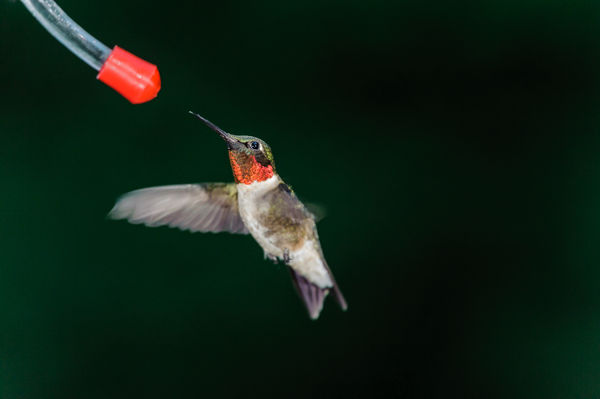
Aug 27, 2019 09:21:00 #
Overthehill1 wrote:
Thanks to tips from here, was able to capture thes... (show quote)
Lighting is everything.
These birds are very iridescent. Light angles will reveal all sorts of colors. They are also pretty bold, and don't react too badly to human presence. Hanging out near a feeder is great. Natural shots are even better. If you have weird backgrounds, you can use a little post processing to minimize the influence of the background. I have used everything from a dark vignette, to desaturating and darkening the entire background to completely isolating it with a black mask.
Flash can help, but sometimes it makes them skittish. Keep your ISO where it is and avoid underexposure in order to keep the noise under control.
Here are some lightly edited images
D300, Sigma 50-500 @ 500mm
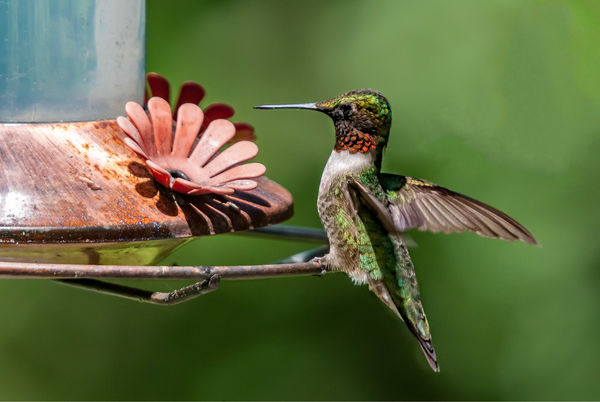
(Download)
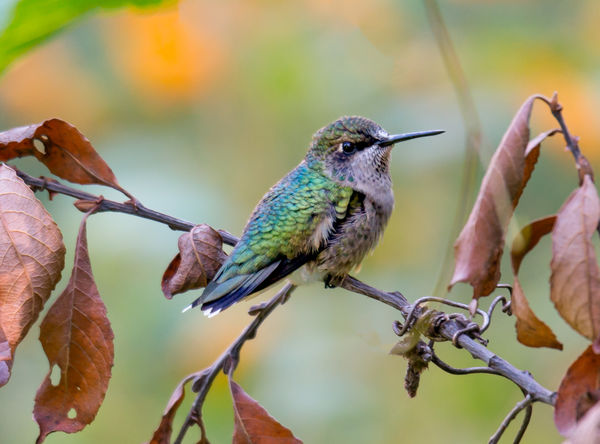
(Download)
D800, Sigma 150-600 Sport @600mm, ISO 800
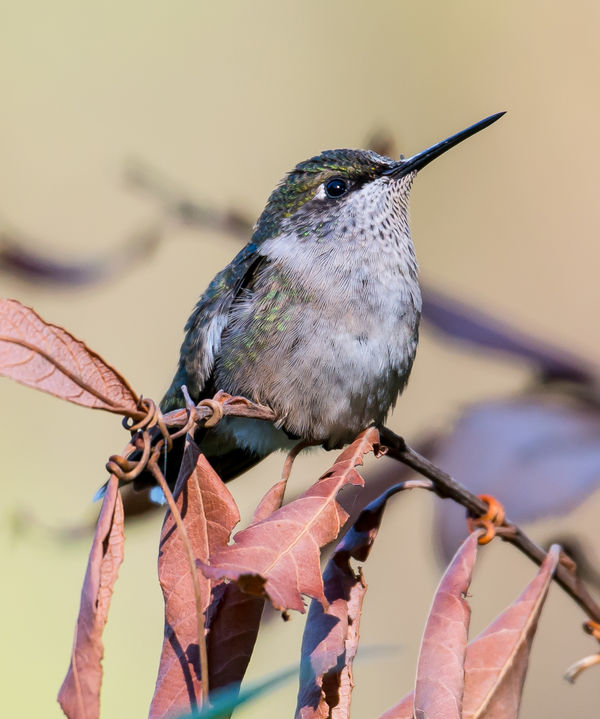
(Download)
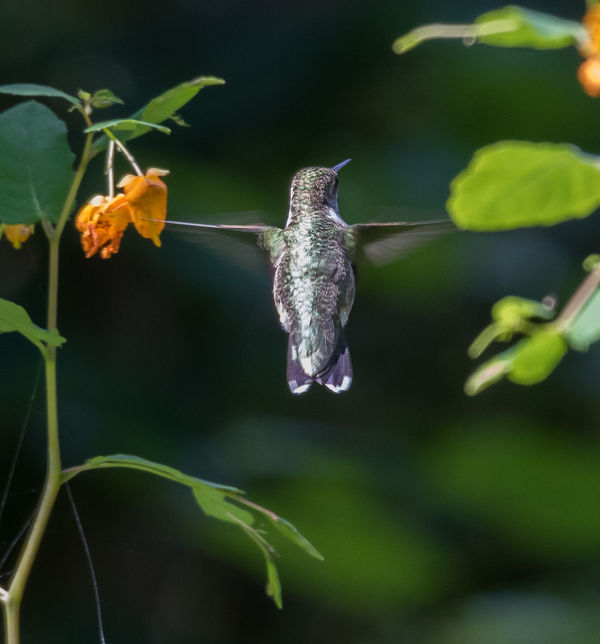
(Download)
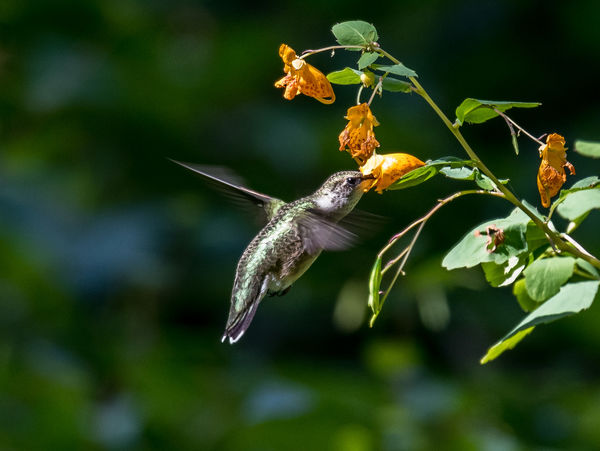
(Download)
D810, Sigma Sport 150-600 @ 600mm, ISO 1000
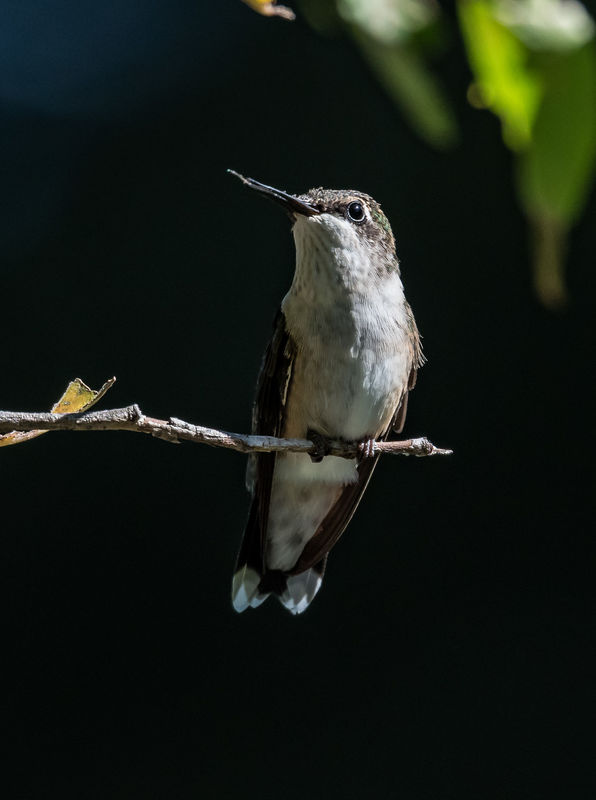
(Download)
Aug 27, 2019 09:41:53 #
Thanks to all for the tips and encouragement, and some great stories, too. Obviously, there are a variety of methods that have proven successful in making some spectacular photos, and its up to me to find what works best in my situation. It is fun and addicting and I'm hoping to post evidence of improvement soon.
Dec 3, 2019 15:38:27 #
Dec 13, 2019 15:51:10 #
Overthehill1 wrote:
Thanks to tips from here, was able to capture thes... (show quote)
Yes, pretty much every software contains a noise reduction feature (don't know which one you used to crop the pictures), but your best bet is to use flash to light them little buggers!
Dec 17, 2019 12:19:07 #
Jan 2, 2020 15:01:34 #
flyboy61
Loc: The Great American Desert
robertjerl has it nailed!
Good advice given!
Photeaux are unsharp, BG could be better, and fill flash would have helped tremendously! Oooo...Your latest photeaux are outstanding!
I spent a couple of hours on a friend's patio waiting for my first hummingbird photo years ago. I saw him feeding on Trumpet Vine. I brought a good book! Flash attached to camera by an off-camera cord. I don't know if I can find the EXIF, but the camera was at 1/500 sec., Using my old Nikon 70-210 lens and I always shot at the D 50's minimum ISO in those days...Adjustable film speed....who knew? I think 100.
Good advice given!
Photeaux are unsharp, BG could be better, and fill flash would have helped tremendously! Oooo...Your latest photeaux are outstanding!
I spent a couple of hours on a friend's patio waiting for my first hummingbird photo years ago. I saw him feeding on Trumpet Vine. I brought a good book! Flash attached to camera by an off-camera cord. I don't know if I can find the EXIF, but the camera was at 1/500 sec., Using my old Nikon 70-210 lens and I always shot at the D 50's minimum ISO in those days...Adjustable film speed....who knew? I think 100.

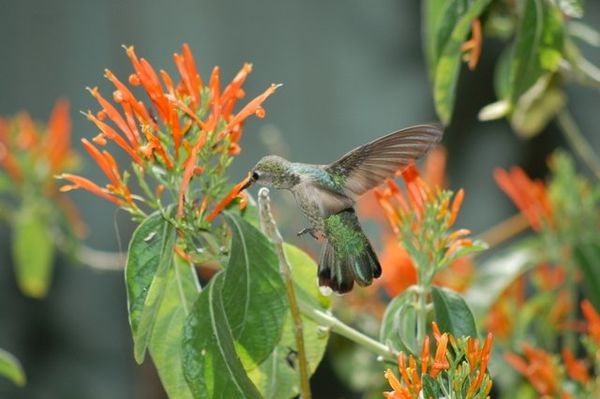
Feb 12, 2020 16:54:40 #
Feb 12, 2020 21:40:25 #
If you are really wanting to rescue these shots try Topaz Sharpen AI possibly in conjunction with Topaz De-Noise AI. I have had some amazing results with these two apps. Topaz Sharpen AI has rescued images that I normally would have binned
Feb 26, 2020 19:17:05 #
Mar 5, 2020 14:44:41 #
An electronic cable release and a prime lens (85mm Zeiss) at a lower ISO with a better background.....Good luck.
Mar 17, 2020 16:02:26 #
The images appear to be rather unexposed and when lightened show a lot of noise, which is further exacerbated by the enlargement. Hummingbirds move very fast. Topaz DeNoise does a good job of reducing noise but it is not perfect. Also, to avoid such high enlargement I suggest moving the camera and lens on a tripod much closer to the feeder. Since your presence will most likely be a deterrent to the birds, consider getting a wireless remote and triggering the camera from a safe distance. You might also consider using fill flash, set on manual and a low power setting to get the shortest duration flash as possible. You could even go as far as to use multiple flashes at low power as your primary light source.
If you want to reply, then register here. Registration is free and your account is created instantly, so you can post right away.






